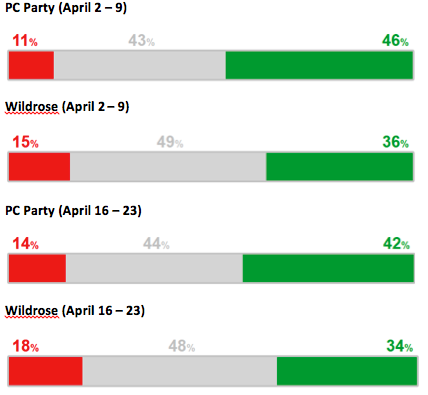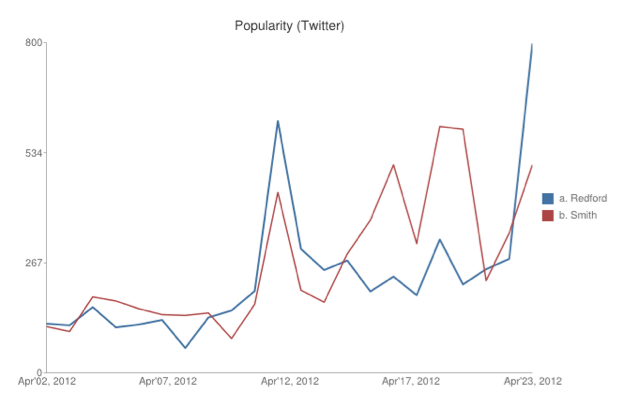Could Social Media Monitoring Have Better Predicted the Alberta Election Results?
After reading Joanne O’Connell’s post “Why Were the Polls Wrong?”, I was intrigued by her insight and wondered if social media could shed some light on why there was such a difference between the polling vs. actual results. As Joanne stated, this election had a large undecided vote (which I believe were mostly former PC voters) that were conflicted emotionally. With that in mind and with the Wildrose controversy that played out near the end of the campaign, it reminded me of a US case study that examined how real time sentiment in social media can help overcome negative events quicker where traditional polling falls short. So did the negative events surrounding the Wildrose party leading up to the final week sway the undecided voters to vote PC?
To investigate this further, I used Sysomos Map and looked at sentiment over time and examined the first week of April vs. the last week of the campaign. What I found was different than the pollsters. According to mentions in blogs, Twitter, forums and online news, the PC Party seemed to always lead the Wildrose with fewer negative mentions and more positive mentions. (Red=Neg, Gray=Neu, Green=Pos)
To look at how this might affect voters, we have to look at each party’s reach and how that reach affected them based on when it was being utilized and what the sentiment at the time was. To best illustrate this, I looked at each party’s Twitter reach and when it was most impactful. This reach is defined as the total amount of users potentially reached by all tweets mentioning the party. As we can see, the tweets mentioning the PC Party had more reach than the Wildrose Party but not by a large margin.
PC Party Twitter Reach
Reach: 8.0 million impressions
Total Tweet Count: 4956
Wildrose Party Twitter Reach
Reach: 7.7 million impressions
Total Tweet Count: 5,576
With both parties having a large Twitter impression, it really came down to when each party made the most of its “impressions” to decide if it indeed had an impact on voter’s decisions. Reviewing the data below, a comparison of the two parties Twitter results shows them neck and neck for most of the race until the final week where some controversy hit the Wildrose Party. PC then took a giant leap on the final day, possibly due to the last few hours of the evening after the vote was decided.
In conclusion, using social media as a form of polling and with the benefit of hindsight, the social data suggests the Wildrose party made a bigger impression during a time when their negative mentions peaked. These negative mentions coupled with the party’s reach could be responsible for creating doubt in the Wildrose Party and thus swaying votes to PC or convincing undecided voters to stay put and have a movie night.
EDITOR’S NOTE: “Popularity” in the line graph is the total number of tweets pertaining to the subject. It includes positive, negative and neutral remarks. The Redford numbers consolidated above also include tweets related to PC and Conservatives in Alberta Election. Smith numbers include mentions of Wildrose party for the Alberta election. These charts, although created after the election for purposes of this blog, can be generated real time throughout the course of the election, making them a more immediate way of measuring immediate voter sentiment.




